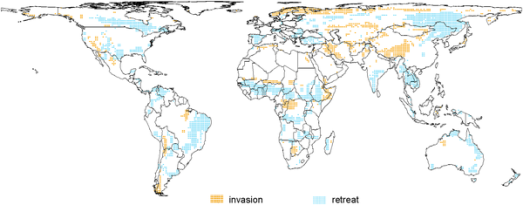Tonight, San Francisco’s KQED Public Television (HD 9) will air the first collaboration between Climate Watch and Quest, its weekly series on science & environmental topics. “California at the Tipping Point” is a half-hour special that explores the likely affects of climate change on the state. One of those anticipated effects is greater risk of wildfire. This post expands on the program with some of the recent science in that arena.
The conventional wisdom is that a warming planet means more wildfires–and in many cases the conventional wisdom is right. But globally it’s a more complex question.
Just last week, Max Moritz and his team at UC Berkeley’s Center for Fire Research & Outreach published a study that shows widely varied fire response to climate changes around the world. Post-doctoral fellow Meg Krawchuk was the lead data cruncher in the effort, with contributions from researchers at Texas Tech University.
What they found were suggestions of rapid changes in fire regimes, and not all in the same direction. Some places (like most of California) will likely see a spike in the fire hazard, while other regions (like the Pacific Northwest) could see a retreat of wildfire frequency and intensity:
“In contrast to any expectation that global warming should necessarily result in more fire, we find that regional increases in fire probabilities may be counter-balanced by decreases at other locations, due to the interplay of temperature and precipitation variables. Despite this net balance, our models predict substantial invasion and retreat of fire across large portions of the globe.”
Moritz has been stumping for new approaches to fire-climate analysis. He says rather than treat fire strictly as the product of other climate change variables, we should think of it also as a climate driver.

You can use the player below to hear an excerpt from my interview with Moritz, in which he explains the new perspective that he thinks his team’s study brings to the fire-climate connection.
[audio:http://ww2.kqed.org/climatewatch/wp-content/uploads/sites/54/2009/04/moritz_web.mp3]